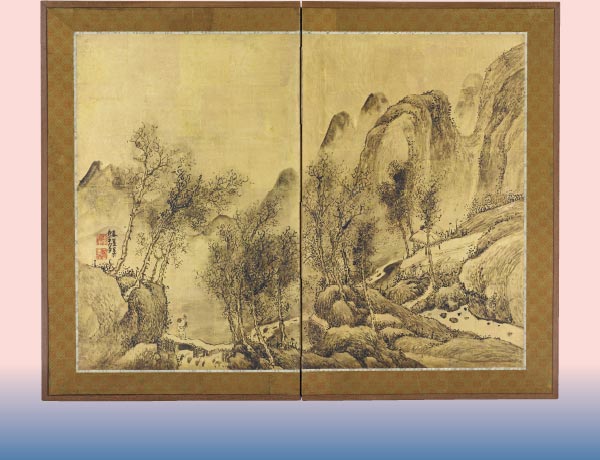

In this painting, the five men in
the front and two women behind them play Chinese instruments, the
last figure at the top holds an incense burner with rising smoke.
The lines delineating the Chinese figures do not appear to have been
drawn with a brush, suggesting that they were rendered in a painting
style known as shitōga, or “finger-tip painting”, which Ike no Taiga
excelled at in his twenties. Such drawings are thought to have been
painted spontaneously at banquets and were depicted quickly using
the fingertips instead of brushes. Onlookers must have been both
surprised and somewhat appalled by this strange technique.

Together with Ike no
Taiga (1723–1776), Yosa Buson represents the greatest of the
literati painters in Japan. This painting is a rare example on a
background of gold foil by Buson, who captured a cold winter
landscape with withered trees in black ink. A lone traveler crosses
a small bridge over a mountain stream, while the path leads to an
arbor on the grounds of a large estate. The painting has been
preserved as a single screen on two small panels, though traces of a
door pull at the opposite sides of the two panels indicate that this
work was originally formatted as small sliding screens for a cabinet
on the side of a decorative alcove or some other architectural
element for a formal room.
